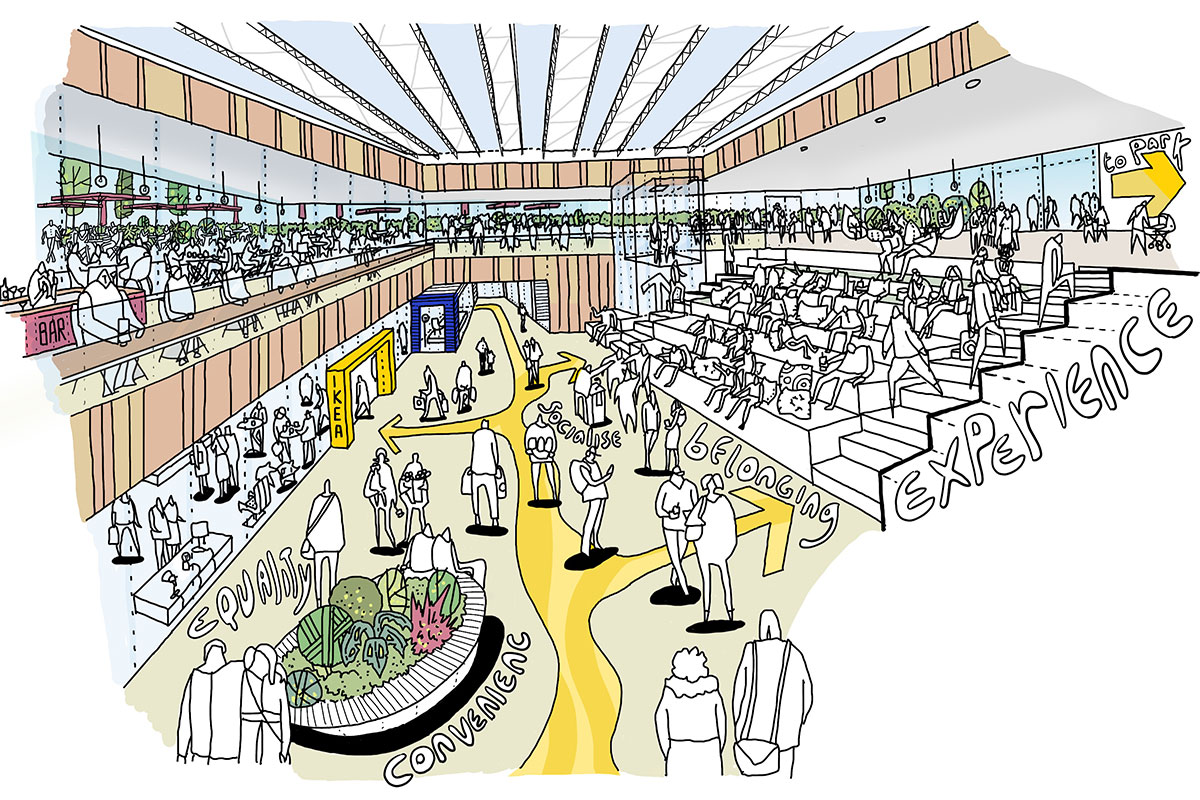#{Title}
#{Copy}
 Garry Wilding assesses the seismic shift in the retail industry in recent years and how a global pandemic, technology and the economy has changed the way we shop.
Garry Wilding assesses the seismic shift in the retail industry in recent years and how a global pandemic, technology and the economy has changed the way we shop.
Even before the pandemic struck early in 2020, the way we shopped, spent our leisure time and worked was changing, driven predominantly by technology. Like it or not, the pandemic has accelerated and intensified this societal reconfiguration. Arguably, the retail landscape has undergone the most painful and seismic level of change as e-commerce takes centre stage. Big names such as Debenhams and Topshop have shut their doors and others are rethinking how they operate in response to the new world we live in. John Lewis’ announcement that some stores will not reopen in 2021 is a direct expression of how they intend to change their business model, on the basis they believe 60-70% of their sales will eventually stem from online activity.
The question of how retailers maintain a strong connection with, and grow their customer base is still to be answered. One thing is sure; they will still need a physical space to create connections and build brand loyalty. What does this mean for our town and cities? It’s fascinating to think of just how much built fabric has been (and will be) released to the market through chain closures and physical store contractions. This quantum of space will allow us to reconsider how large parts of our city and town centres function. Changes to the planning classes will also influence and facilitate more flexibility to adapt to demand, such as allowing Class E conversions from retail to residential through PD rights, which will bring more living accommodation to our urban centres. We must seize this opportunity to make changes that could generate stronger, more active, vibrant, mixed and ultimately sustainable places.

Localism is the word of the moment. We are becoming acquainted with our neighbourhoods more than ever before. As social distancing measures ease, there will be a renaissance of strong local centres with the ingredients to respond to our needs on a more agile basis. Even when restrictions are lifted, some commuters will still opt to work from home for part of the working week and this offers huge opportunities for gyms, cafes, flexible workspaces, restaurants and even retail to thrive. The challenge now is to discover how retail will evolve to stay relevant in an uncertain future.
Hammersmith is a great example of where we are working to create something important for local people; the reinvention of a 1970s shopping centre as a welcoming, naturalised meeting place. A busy centre in west London with excellent transportation links to central London, the transport hub historically buzzes with commuters every morning and evening, an ecosystem of life and business. The project with Ingka at Kings Mall began before the pandemic and even then we were focusing on the needs and desires of the proximate community, understanding what was important to them and what was needed to create a successful new place. To be clear, we are not just enlivening a shopping centre; our goal is to build a strong and vibrant heart for Hammersmith, a welcoming, inclusive space for social interaction, experiential shopping, ‘retailtainment’, eating, drinking, learning, fun and relaxation. A place that the community identifies with, feels part of and genuinely cares for; a place of true, meaningful social cohesion.
With Westfield, the behemoth of retail just a mile up the road, the small local centre could not compete with the retail, leisure and food and beverage offering, together with the new homes, offices and education developments that surround it. However, with the support of a progressive client, we pursued a counterpoint to the international shopping destination, based on listening to and understanding the needs of the local community. We wanted to create something that felt original and purposeful for people who would use it regularly.

Our design uses natural materials and biophilic design. A set of amphitheatre steps is at the heart of the development, enabling viewing of events, meeting friends and taking a rest from hectic lives. These steps link the street level with a large public space above: a piece of green urban tranquillity in a frenetic location, designed to stimulate a sense of wellbeing and a feeling of inclusion and belonging. More than a shopping destination, the spaces will be used for yoga sessions, boxercise classes and, for IKEA, it’s an opportunity to hold furniture hacking classes, along with other community driven educational initiatives, to add experience and build customer loyalty.
Our retail spaces are being reimagined as local, social and cultural hubs across the UK. Former department stores are perfectly placed to be transformed into new homes or offices - ideally a mix of both - coupled with experiential retail and other community focused uses. This is a great opportunity to repopulate our city centres and in doing so, activate them throughout the day and night.
These are interesting times. With the potential to redefine our cities and town centres for many years to come, there is an opportunity to redeem some of the failings of previous generations to occupy and invest in our urban centres. Through considered and innovative thinking we are able to generate a more joined up and sustainable model of development that helps and doesn’t hinder retail. Although it’s a time of change for retail as we know it, it’s also a time for transformation, to make significant decisions that will benefit us all in the long term.